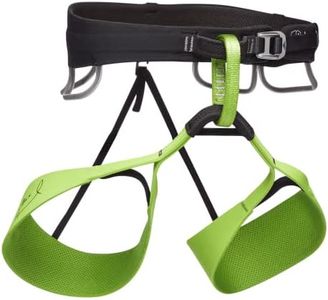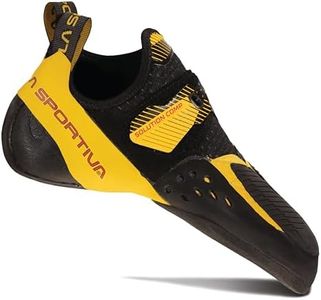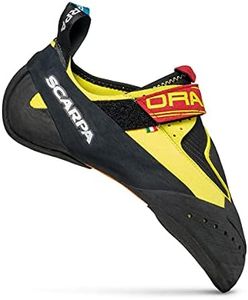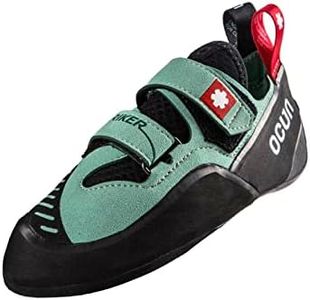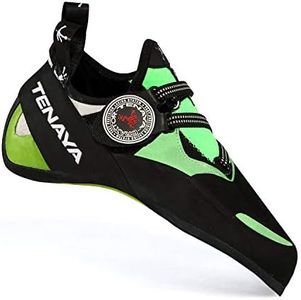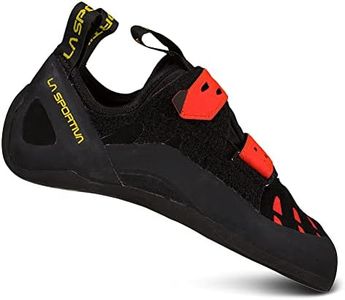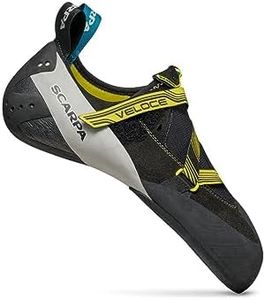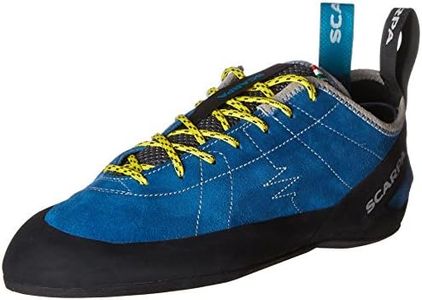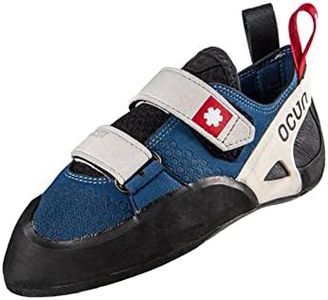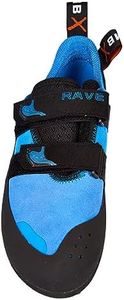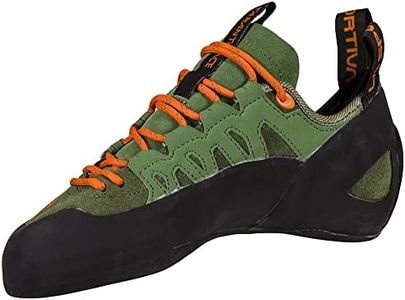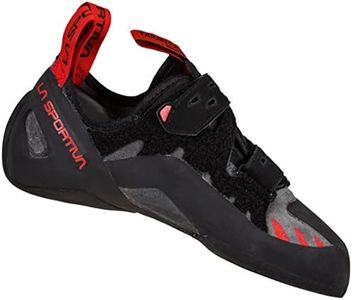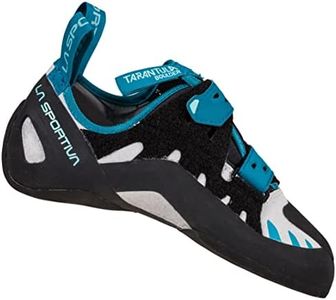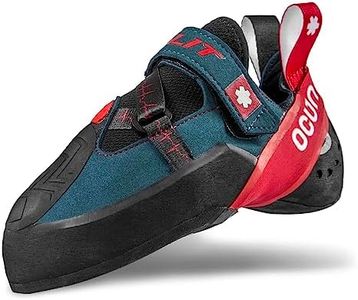We Use CookiesWe use cookies to enhance the security, performance,
functionality and for analytical and promotional activities. By continuing to browse this site you
are agreeing to our privacy policy
10 Best Rock Climbing Shoes
From leading brands and best sellers available on the web.By clicking on a link to a third party's website, log data is shared with that third party.
Buying Guide for the Best Rock Climbing Shoes
Choosing the right rock climbing shoes is essential for both comfort and performance. The right pair can help you grip better, climb more securely, and protect your feet, while poorly chosen shoes can lead to discomfort, lower confidence, or even injury. Before buying, think about the type of climbing you plan to do, your climbing experience, and your personal comfort. Try on several pairs, ideally at the end of the day when your feet are slightly swollen, as this better mimics real use conditions. Remember that climbing shoes should feel snug but not painfully tight, and different styles suit different climbing needs.Fit and SizingFit and sizing refer to how snugly the climbing shoe conforms to your foot. This is crucial because a good fit ensures optimal power transfer and sensitivity, which helps you place your feet with precision on small holds. Climbing shoes usually run smaller than street shoes; some are designed to be worn very tight for performance, while others offer a more relaxed fit for comfort. Tight, aggressive fits work best for short, hard climbs, while a looser fit is preferable for longer climbs or those new to the sport. If you prioritize comfort, choose a shoe that feels snug but allows your toes to lie flat, and avoid shoes that cause pain.
Shoe Shape (Profile/Downturn)Shoe shape, often called the profile or downturn, describes how curved or flat the shoe is when viewed from the side. This shape affects how your foot sits in the shoe and how force is applied to holds. Aggressive shoes with significant downward curve are designed for overhanging routes and technical climbing where toe power is essential, but they can feel less comfortable for long periods. Neutral or flat shoes are more comfortable and work well for beginners or traditional climbing, while moderate (slightly downturned) shoes offer a balance between comfort and performance. Choose a shoe shape based on the steepness and style of climbs you prefer, and your tolerance for tightness.
Closure SystemThe closure system refers to how you secure the shoe onto your foot. The main types are lace-up, Velcro (hook-and-loop), and slip-on. Lace-ups allow for precise fit adjustments and are ideal for when you need to fine-tune fit over a long period, making them good for trad climbing. Velcro closures make it easy to take shoes on and off quickly, preferred for bouldering or gym sessions where you frequently remove shoes. Slip-on shoes (also called slippers) offer ease of use and sensitivity but may offer less support. Your climbing routine—whether you prioritize quick changes, comfort, or adjustability—should guide your choice.
Material (Upper Construction)This spec refers to the material used in the upper part of the shoe—the part that covers the top of your foot. Leather uppers stretch and mold to your foot shape over time, offering a customized fit, but may loosen after breaking in. Synthetic materials tend to stretch very little, so the fit you try on in-store is close to what you'll have long-term. Some shoes combine both materials for optimized performance. If you want a shoe that adapts to your foot, leather might be better, but for consistent fit, synthetic is preferable.
Sole Stiffness and ThicknessSole stiffness and thickness affect support and sensitivity. Stiff soles are more supportive and help on small edges, making them good for beginners or long climbs. Softer, thinner soles provide greater sensitivity, letting you feel the rock better, which is valuable for technical climbs but can be less comfortable for long durations. If you're new or doing multi-pitch climbs, a stiffer, thicker sole can offer protection and comfort, while experienced climbers tackling challenging routes might prefer softer, thinner soles for better feel.
Rubber Type and StickinessThe rubber compound on the sole determines how well the shoe sticks to the rock and how long the sole will last. Stickier rubber offers more grip, ideal for slabs and technical footwork, but it can wear out faster. Harder rubber lasts longer and provides more edge support, suitable for beginners or those climbing on rough terrain. If friction and precise foot placements are essential for your climbing style, prioritize stickiness; if durability and edging are more important, a harder rubber may be the better choice.
